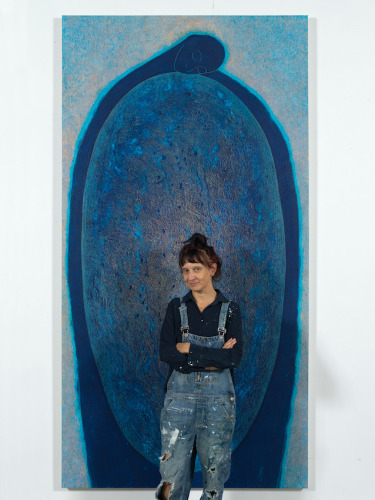
Luisa Rabbia
Open Dialogue | Luisa Rabbia: "When Did Your American Dream Die?"
By Luisa Rabbia
December 3, 2020
Luisa Rabbia has been invited to write for OPER DIALOGUE, a space conceived as a free flow of words to develop reflections already inherent in the artist’s individual research but here more extended to the emergence of our contemporaneity.
“When Did Your American Dream Die?” asked an email sent by El Museo del Barrio last June in the midst of the protests in support of Black Lives Matter.
My American dream, the one that brought me to live in New York City 20 years ago, fell ill during the election of Trump and passed away a few months ago. Until then, I lived in the illusion that the fights for human rights for which America had been the spokesperson of over the years had mostly eradicated the signs of its troubling past. Many friends told me that racism still existed here, but I couldn’t believe them, because it is easy to find excuses for what you do not experience in person. And it's unsettling losing this dream, that there is true equality in America.
I became an American during the Obama presidency after 14 years in the United States. During that time, when I dated a black guy from the Caribbean, I didn’t experience any racism when we were together, and he protected my dream by telling me that he didn’t experience racism in the USA, either. I don't know how we managed to defend our illusion so stubbornly but, looking back, I think that we both were dreamers, and it makes sense, after all it was the ‘American dream’ that brought us here. America, for me, represented a place where, despite its troubled history, the fight for human rights was leading to a better future, to a place where EVERYONE could express their sexuality and culture, regardless of gender and race.
During the first 16 years of living here, my American friends continually tried to ‘wake me up’ to the reality of racial and social injustices, but I resisted, aided by my experience in the multiethnic environment of New York City. I insisted on justifying the cases of discrimination in the newspapers as misunderstandings. My current American boyfriend, white and raised in the South, carries the weight and legacy of this particular American sin, in his heart. His largest concern – explored and understood through personal experiences, books, movies and art - is racial conflict. With experience and sensitivity, he has shown me that racism here is systemic (only here?), but nothing has disillusioned me as abruptly as the last four years in this country. I learned to see racism through reading, movies, friendships, protests and, sadly, the daily news.
After the street demonstrations in response to the murder of George Floyd, the horrible sense of betrayal was joined by the need to continue to hope, because without hope there is no energy to change anything. Since everything is connected, we’ll be able to talk about progress only when everyone will be respected, we’ll be able to talk about freedom only when everyone will be free. Over the years we have divided into groups of color, gender, and sexual identity in order to learn how to listen to each other and to give everyone voice. It is important to listen to those who say that their life is not respected, because the fact that it does not happen to you does not mean that the problem does not exist. It just means you are privileged.
In my work, I am interested in evoking everyone's belonging to a universe made of the past, in which everyone's actions, even the smallest ones, count in the present and determine the future. Over a surface covered by thick fingermarks I apply layers of paint in which I engrave and remove matter, in a process of addition and subtraction that I compare to life, to the passage of time. I Am Rainbow, currently shown in my solo-exhibition From Mitosis to Rainbow at Peter Blum Gallery in NYC (until January 9, 2021), was painted during the recent manifestations of division and social conflict. Rainbows, in many cultures, are symbols of hope in better times, of sexual diversity, acceptance, respect and civil rights. In some cultures, they represent ‘bridges’ between our life and the afterlife.
The title of the painting makes everyone responsible and part of the rainbow. But I Am Rainbow also reflects on the fact that we are not a stable form and as such we change and transform over time. I am not referring only to the possibility that from spirit we become matter and then return to spirit, but also to the transformations that occur in the course of our life. We can potentially be anything, we contain multitudes.